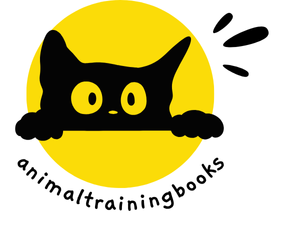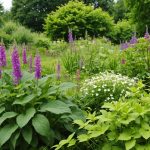Bonfire Night brings excitement, but it also poses dangers to hedgehogs who seek shelter in gardens. As UK homes prepare for festivities, protecting these vulnerable creatures should be a priority. Hedgehogs face risks from bonfires, fireworks, and stray debris. By adopting a few simple precautions, you can create a safer environment that allows both your family and local wildlife to enjoy the celebrations. Discover five essential tips to prevent hedgehog injuries this Bonfire Night, ensuring a night of fun and safety for everyone.
Understanding the Risks to Hedgehogs During Bonfire Night
Bonfire Night, celebrated with fireworks and bonfires, poses significant risks to hedgehogs. These small creatures often seek refuge in piles of leaves and wood, making them vulnerable during such events. Hedgehog safety is crucial, as many are injured or killed when bonfires are lit without proper checks.
Lire également : Top Tips for Keeping Your Active Vizsla Hydrated During Summer Adventures
Statistics reveal a worrying trend: a substantial number of hedgehogs suffer injuries during festive events like Bonfire Night. The British Hedgehog Preservation Society highlights that hundreds of hedgehogs are affected annually, underscoring the need for increased awareness. These figures are a stark reminder of the importance of vigilance and wildlife conservation efforts during such celebrations.
To protect hedgehogs, it is essential to raise awareness about the potential hazards they face. Encouraging individuals to check bonfires before lighting them can significantly reduce the risk of harm to these vulnerable animals. Simple actions, such as moving the bonfire pile before lighting it, can make a substantial difference in hedgehog safety.
Sujet a lire : Empowering UK Landowners: A Guide to Restoring Natural Habitats for Endangered Species
By understanding the risks and taking proactive steps, we can help ensure that Bonfire Night remains a festive occasion without compromising the safety of local wildlife. This awareness is vital for the continued conservation of hedgehogs and the protection of biodiversity in our communities.
Preparing for Bonfire Night: Essential Checks
Before lighting a bonfire, pre-bonfire preparations are crucial to ensure the safety of hedgehogs and other wildlife. One of the most important steps is conducting thorough wildlife checks. Hedgehogs, in particular, are at risk as they often nest in piles of leaves and wood, mistaking them for safe havens.
Importance of Inspecting Bonfire Materials
Inspecting bonfire materials is vital. Carefully dismantle and rebuild the pile on the day of the event to ensure no hedgehogs are hiding within. This simple action can prevent unnecessary harm to these creatures. Use a torch and a stick to gently check through the heap, listening for rustling sounds that might indicate an animal’s presence.
Creating a Safe Environment
Creating a safe environment involves more than just checking the bonfire. Consider the location: building bonfires away from hedgerows and dense vegetation reduces the likelihood of disturbing wildlife habitats. Encourage neighbours to do the same, fostering a community-wide effort to protect local wildlife.
Checklist for Homeowners
- Inspect and rebuild the bonfire pile on the day of lighting.
- Use a torch and stick to check for wildlife.
- Choose a location away from dense vegetation.
- Encourage neighbours to participate in wildlife checks.
By following these guidelines, we can reduce the risks to hedgehogs and enjoy a safer Bonfire Night.
Creating Safe Spaces for Hedgehogs
Providing hedgehog habitats in gardens can significantly enhance wildlife safety. By offering alternative shelters, homeowners can encourage hedgehogs to nest safely away from potential hazards like bonfire areas. This proactive approach not only protects hedgehogs but also enriches garden biodiversity.
Tips for Alternative Shelters
Consider creating safe nesting areas by placing hedgehog houses in secluded spots within your garden. These houses should be sheltered from harsh weather and away from high-traffic zones. Use natural materials like leaves and twigs to mimic their natural environment, making the space inviting and secure.
Role of Gardens in Wildlife Safety
Gardens play a crucial role in supporting wildlife safety. By maintaining a diverse range of plants, you can provide food and shelter for hedgehogs and other creatures. Avoid using chemicals, as they can harm wildlife. Instead, opt for organic gardening methods to create a safe haven for hedgehogs.
Encouraging Hedgehogs to Avoid Bonfire Areas
To deter hedgehogs from bonfire zones, ensure these areas are clear of attractive nesting materials. Regularly check and maintain garden boundaries to prevent hedgehogs from wandering into risky locations. By fostering a welcoming environment elsewhere, you can gently guide hedgehogs to safer spaces.
Educating Friends and Family
Community awareness plays a pivotal role in protecting wildlife during Bonfire Night. Sharing knowledge with guests attending your event can significantly impact wildlife education and conservation efforts. By hosting an informative gathering, you can ensure everyone is mindful of hedgehog safety.
Hosting an Informative Gathering
To focus on wildlife safety, consider incorporating educational elements into your Bonfire Night celebrations. Provide guests with information on how to conduct wildlife checks and the importance of creating safe spaces for hedgehogs. You might include a brief presentation or distribute informative leaflets. Highlight the risks bonfires pose to hedgehogs and the steps needed to mitigate them.
Engaging Children in Conservation Efforts
Engaging children is crucial for fostering a long-term commitment to conservation. Encourage them to participate in activities that promote wildlife education. Set up a station where they can learn about hedgehogs and other local wildlife. Hands-on activities, like building hedgehog houses or identifying animal tracks, can make the experience enjoyable and educational.
By prioritising community awareness and involving all guests, you create a collective responsibility for wildlife safety. This approach not only protects hedgehogs during Bonfire Night but also instills a sense of stewardship in future generations.
Environmental Impact of Bonfire Night
Bonfire Night is not just a celebration; it comes with significant environmental concerns. Fireworks and bonfires contribute to air pollution, releasing harmful particles and gases into the atmosphere. These emissions can affect air quality, posing health risks to humans and wildlife alike.
Wildlife Impact Beyond Hedgehogs
While hedgehogs are notably at risk, Bonfire Night affects other local wildlife too. Birds, for instance, can become disoriented by the loud noises and bright lights, potentially abandoning their nests. Small mammals and amphibians may also suffer from habitat disturbances caused by bonfire setups in natural areas. These disruptions can lead to increased stress and displacement, impacting their survival.
Minimising Environmental Damage
To reduce the environmental impact, consider using eco-friendly fireworks that produce less smoke and noise. Opt for community bonfire events instead of multiple smaller ones to limit the number of pollutants released. Additionally, ensure that bonfire materials are free from toxic substances like plastics and painted wood, which can release harmful chemicals when burned.
By addressing these environmental concerns, we can enjoy Bonfire Night while safeguarding our ecosystem. Simple changes in how we celebrate can make a significant difference, ensuring that festivities do not come at the expense of our planet’s health.
Reporting and Responding to Hedgehog Injuries
Ensuring hedgehog welfare during Bonfire Night requires swift action when injuries occur. If you find an injured hedgehog, immediate steps can make a significant difference in its recovery. First, gently place the hedgehog in a box lined with a towel to keep it warm and secure. Avoid feeding it, as this can cause further distress.
Emergency Response Steps
Contact a local wildlife rehabilitation centre or veterinarian experienced in treating hedgehogs. The British Hedgehog Preservation Society and other organisations offer guidance and support. Prompt professional care is crucial for the hedgehog’s survival and well-being.
Resources for Wildlife Rehabilitation in the UK
The UK has several dedicated resources for hedgehog rehabilitation. Organisations like the British Hedgehog Preservation Society provide a network of carers and facilities equipped to handle wildlife emergencies. They offer advice and can direct you to the nearest rehabilitation centre.
Importance of Reporting Incidents
Reporting hedgehog injuries to local wildlife organisations is vital. This information helps track incidents and identify high-risk areas, enhancing hedgehog welfare efforts. It also allows for a coordinated response, ensuring injured animals receive the necessary care promptly. Engaging with these organisations strengthens community awareness and conservation initiatives.
Engaging with Local Wildlife Organizations
Community involvement plays a crucial role in enhancing wildlife conservation efforts, especially during events like Bonfire Night. Partnering with local wildlife groups can significantly amplify the impact of conservation initiatives. These organizations often have the expertise and resources to guide effective strategies for protecting hedgehogs and other vulnerable species.
Benefits of Partnering with Local Wildlife Groups
Collaborating with local wildlife organizations can provide numerous benefits. These groups offer valuable insights into hedgehog conservation and can assist in organizing educational events. By working together, communities can access a wealth of knowledge and support that enhances conservation efforts.
Supporting Hedgehog Conservation Initiatives
Supporting conservation initiatives can be as simple as participating in local events or donating to wildlife projects. Many organizations run campaigns focused on hedgehog welfare, providing opportunities for individuals to contribute. These initiatives often include habitat restoration projects, educational workshops, and awareness campaigns.
Volunteer Opportunities During Bonfire Night
Volunteering during Bonfire Night is an excellent way to get involved. Many wildlife groups seek volunteers to help conduct wildlife checks, distribute educational materials, and engage with the community. By volunteering, you can directly contribute to the safety and well-being of hedgehogs, ensuring a safer environment for all wildlife during celebrations.
Long-Term Strategies for Hedgehog Protection
Ensuring long-term wildlife safety requires consistent efforts beyond Bonfire Night. Implementing sustainable practices in gardens and communities plays a crucial role in hedgehog protection. By adopting these practices, individuals can create environments that support hedgehog conservation year-round.
Importance of Ongoing Hedgehog Protection
Hedgehogs face threats throughout the year, not just during festive events. Continuous protection efforts are essential for their survival. By maintaining safe habitats and reducing hazards, we can significantly enhance their chances of thriving. This includes regular garden maintenance to prevent the accumulation of materials that attract hedgehogs to dangerous areas.
Implementing Sustainable Practices
Sustainable practices in gardens can include creating hedgehog-friendly environments. This involves planting native flora, avoiding pesticides, and providing natural shelters. Communities can engage in collective efforts, such as establishing wildlife corridors that allow hedgehogs to move safely between habitats. These initiatives foster a supportive ecosystem for hedgehogs and other wildlife.
Role of Legislation in Hedgehog Conservation
Legislation plays a pivotal role in hedgehog conservation. Laws that protect natural habitats and regulate urban development can prevent habitat loss. Advocacy for stronger wildlife protection policies is crucial. By supporting legislation that prioritizes biodiversity, communities can ensure long-term safety for hedgehogs and contribute to broader conservation goals.
Expert Opinions on Hedgehog Welfare
In the realm of hedgehog welfare, insights from wildlife experts are invaluable. These professionals emphasise the pressing need for comprehensive hedgehog research to better understand the challenges these animals face, particularly in urban environments. Such research is crucial for developing effective conservation strategies.
Insights from Wildlife Experts
Wildlife experts have observed that hedgehogs are increasingly adapting to urban settings, which poses unique challenges for their survival. They stress the importance of monitoring hedgehog populations to identify trends and threats. This data is essential for crafting targeted conservation efforts that address specific issues like habitat fragmentation and food scarcity.
Importance of Urban Hedgehog Research
Research on hedgehog populations in cities is vital. It helps experts understand how urbanisation impacts these creatures and informs strategies to mitigate negative effects. Studies have shown that urban hedgehogs often face higher risks of injury and habitat loss. By focusing on urban areas, researchers can develop solutions that promote coexistence between hedgehogs and human populations.
Future Trends in Conservation
Looking ahead, experts predict a greater emphasis on community involvement in hedgehog conservation. This includes educating the public on creating hedgehog-friendly environments and supporting policies that protect urban wildlife. The future of hedgehog welfare hinges on continued research and collaboration between scientists, policymakers, and the public.
Conclusion and Call to Action for Homeowners
Taking proactive measures as homeowners is crucial in hedgehog advocacy. By fostering a sense of community responsibility, we can collectively enhance wildlife protection. Simple actions, like creating safe garden environments and checking bonfire areas, significantly contribute to hedgehog safety.
Community responsibility extends beyond individual efforts. Encouraging neighbours to participate in wildlife protection initiatives amplifies the impact. By working together, communities can establish safer habitats and reduce risks to hedgehogs. This collective approach not only benefits hedgehogs but also enriches local biodiversity.
For those interested in furthering their knowledge, numerous resources are available. Organisations like the British Hedgehog Preservation Society offer educational materials and guidance on hedgehog conservation. Engaging with these resources empowers homeowners to make informed decisions and implement effective conservation strategies.
In summary, embracing hedgehog advocacy and fostering a culture of community responsibility is essential. By taking proactive steps and utilising available resources, homeowners can play a pivotal role in safeguarding hedgehogs and promoting a harmonious coexistence with wildlife.
















